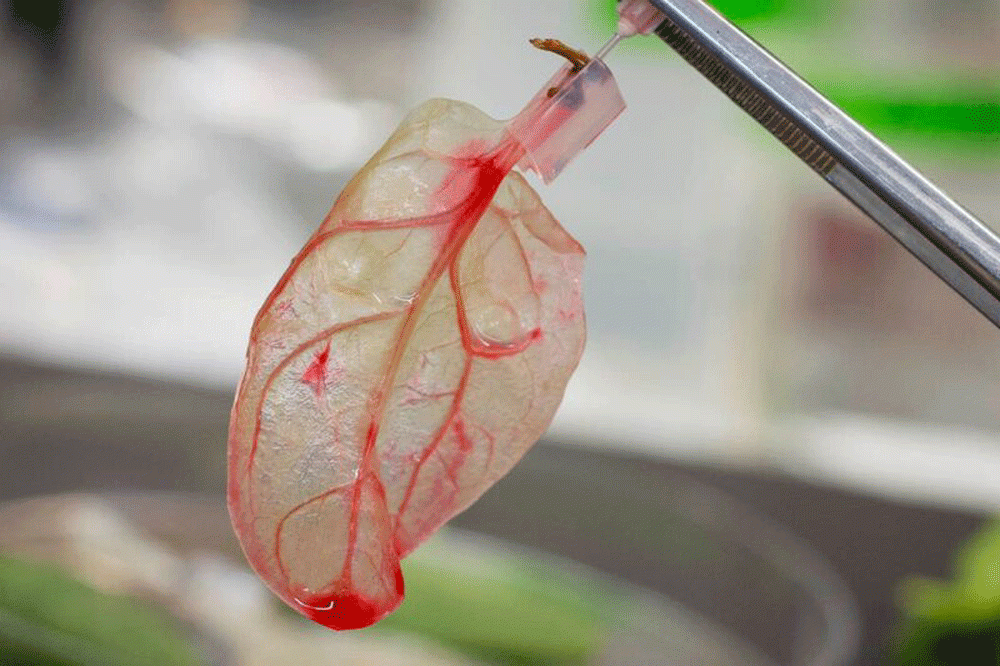Advertisement
Transforming Spinach Leaves Into Heart Tissue
Resume
You knew that spinach was good for your heart, but researchers at Worcester Polytechnic Institute are now taking spinach leaves and transform them into human heart tissue — that beats.
Scientists used the delicate structure of a spinach leaf as scaffolding to grow a new vascular system, in a marriage of human and plant that, researchers say, could one day be implanted into a damaged human heart.
You can view the video of the beating cells here.
Guest
Glenn Gaudette, professor of biomedical engineering at Worcester Polytechnic Institute, which tweets @wpi.
Interview Highlights
On how they turned a spinach leaf into heart tissue
"We were aiming to solve a major problem in America, which is cardiovascular disease — and really looking at heart attacks. What happens when a patient has a heart attack is part of their heart wall no longer contracts. And so we need a way to restore contractile function to that part of the heart. That's where tissue engineering comes in.
One of the problems with tissue engineering these days is delivering blood and oxygen to the cells. And so that's where we came across spinach leaves ...
One day my graduate student I were having lunch and we noticed ... that spinach leaf, the veins in that. And so what we did was we used a process called decellularization. We removed all the plant cells from the spinach. And what that leaves behind is a scaffold that cells can adhere to. And it also leaves behind the veins in the spinach leaf.
So the scaffold, it's similar to a house with a two by fours. The cellulose takes the place of the two by fours. And so we get rid of all the sheetrock and all that stuff there in the house and we're just left with the cellulose in the spinach leaf."
On making the heart tissue build and beat
"We took induced pluripotent stem cells and we get those cells to contract and then we seed them onto the leaf.
The cells contract on their own. Because we differentiate them, we turn them into these contracting muscle cells. We can then put them on the leaf and they'll start to beat on their own after about five days and they continue to beat up to 21 days. And then we stop the experiment to get a closer look at the cells, the scaffold and things like that.
We didn't test blood itself. What we tested was a red dye that kind of mimicked blood and we put particles in there. We use particles the same size as red blood cells to confirm that they would pass through the veins of the spinach leaf. We actually collected them out the other side and the 10 micron diameter particles, which are about the same size as red blood cells, went through the veins no problem. When we use larger particles, they did not go through, as we'd expect because our capillaries allow the red blood cells to go through but not much bigger things."
This article was originally published on March 30, 2017.
This segment aired on March 30, 2017.